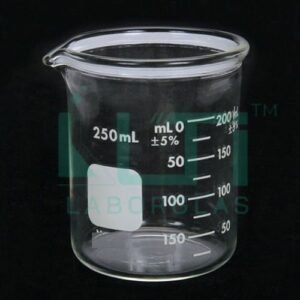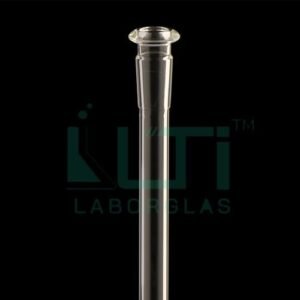- Made of Boro 3.3 Glass
- With socket and cone
- With needle-valve stopcock
- With sintered frit (porosity: 0), with suction tube (thread GL 14)
| PART No. | Capacity (ml) | Effective length (mm) | Dia. (mm) | Female & Male (NS) | PACK Qty. |
| 5960-35 | 35 | 200 | 15 | 14/23 | 1 |
| 5960-120 | 120 | 400 | 20 | 14/23 | 1 |
| 5960-280 | 280 | 400 | 30 | 29/32 | 1 |
| 5960-430 | 430 | 600 | 30 | 29/32 | 1 |
Here are some common uses for chromatographic columns with a frit and needle valve stopcock:
- High-Performance Liquid Chromatography (HPLC):
- These columns are frequently used in HPLC systems where precise control over the eluent flow rate is crucial for achieving high-resolution separations.
- Liquid Chromatography (LC):
- Chromatographic columns with frits and needle valve stopcocks find applications in various liquid chromatography techniques, providing accurate and adjustable eluent flow rates for efficient separation.
- Analytical Chemistry:
- These columns are used in analytical chemistry laboratories for the separation and analysis of complex mixtures, allowing researchers to identify and quantify individual components with high precision.
- Sample Purification:
- The columns are employed for the purification of samples by separating different components based on their interactions with the stationary phase. The needle valve stopcock allows for fine-tuned elution control.
- Protein and Biomolecule Separation:
- Chromatographic columns with frits and needle valve stopcocks are utilized in protein purification and biomolecule separation, where accurate flow control is crucial for obtaining high-purity fractions.
- Size Exclusion Chromatography (SEC):
- Columns with frits and needle valve stopcocks can be used in SEC, where molecules are separated based on their size as they pass through a porous medium.
- Flash Chromatography:
- Flash chromatography, a rapid form of chromatography used for the separation of compounds, benefits from columns with needle valve stopcocks to control the elution process efficiently.
- Educational Purposes:
- Chromatography columns with needle valve stopcocks are useful in educational settings for teaching chromatography principles and techniques. Students can observe the impact of flow rate on separation efficiency.
- Research and Development:
- In research laboratories, these columns are employed for various studies requiring precise chromatographic separations, including the isolation and purification of specific compounds.
- Purification of Chemical Compounds:
- These columns are used in the purification of chemical compounds, removing impurities and obtaining high-purity substances for subsequent analyses or experiments.







